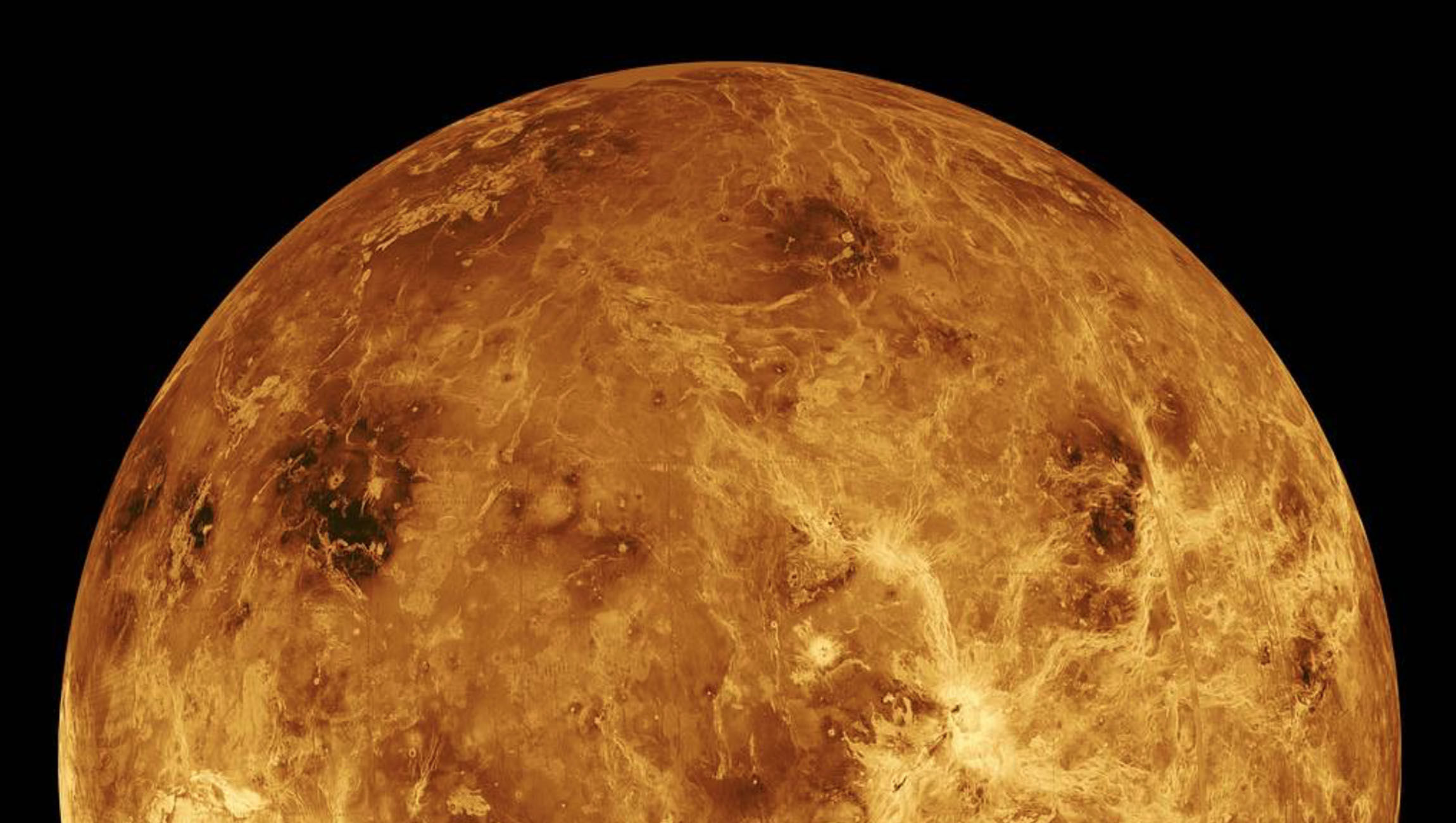Create a free profile to get unlimited access to exclusive videos, sweepstakes, and more!
Venus was once a raging fireball of lava and chaos

Mars and Venus really are opposites. Where Venus is unbearably hot and swirling with toxic fumes, Mars is a frozen desert whose atmosphere was radiation-bombed away billions of years ago. What they were thought to have in common in their ancient pasts was a rocky landscape flowing with water and possibly crawling with life — but it seems Venus was too hot to handle.
What scientists at the Lunar and Planetary Institute (LPI) recently unearthed about Venus is that it was probably a volcanic fireball overflowing with lava. Led by student intern Frank Wroblewski, they found that the planet’s Ovda Regio highlands plateau, previously thought to be made of granite-based lava like the continents on Earth (which also needed oceans to form), is actually made of basaltic lava. The study was recently published in Journal of Geophysical Research: Planets.
If you want to imagine prehistoric Venus, think volcanoes belching out fiery molten rock that would make for some amazing sci-fi special effects.
“We know so little about Venus’ surface,” said team member Dr. Allan Treiman, a Universities Space Research Association (USRA) scientist at LPI. “If the Ovda Regio highlands are made of basaltic rock as is most of Venus, they were likely squeezed up to their current heights by internal forces, possibly like mountains which result from plate tectonics on Earth.”
Venus’ violent past was revealed when Wroblewski’s team used radar data to create a new map (pictured here) of the Ovda Fluctus lava flow, located within the Ovda Regio area. Taking a closer look at the radar from NASA’s Magellan mission, they realized that there were massive outflows of basaltic lava as opposed to the granitic lava that formed the continents on our planet. Water isn’t necessary for basaltic rock to form, though it can still be present. These lava flows were also similar to basaltic flows on Earth.
Ovda Fluctus and two similar Venusian lava flows are known as “festoon” flows because of the pressure ridges that formed on the surface. Because of the thickness of these lava flows, previous researchers believed that they were made of minerals similar to flows on Earth, which further led them to believe that oceans once existed on Venus. They figured out that the observations made by Magellan were a much better match for basaltic lava.
More evidence for a volcanic Venus could be found in the topography of Ovda Fluctus, as Wroblewski and colleagues observed.
“Topographic depressions, like that at the center of Ovda Fluctus, are known for flows of basalt lava on Earth, but not for silica-rich lava flows,” the team said in their study.
While the LPI team still needs to keep digging into Magellan data to find out everything that lies beneath, NASA is thinking of how to get another mission beyond those toxic clouds, possibly a manned mission, so who knows what other mysteries Venus is hiding.


























